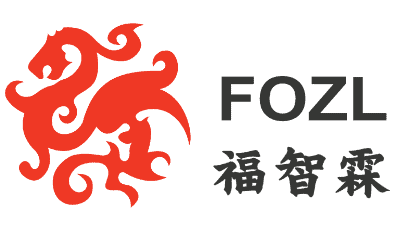Accounting Software
2018-01-08Consolidated Statement
2018-01-26

Role of Trade Marks

Almost every SME has a business name or one or more trade marks and should consider protecting them. along with confidential business information, such as their customer lists and sales strategies. Most companies have developed creative original designs, and have already produced and published copyrighted work, dissemination or retail support. Some companies may have invented or improved a product or service.
Introduction to Singapore Intellectual Property

Copyright is the right granted to creators of works to prevent others from copying intellectual and creative works without the creator’s consent. In Singapore, copyright is governed by the Copyright Law (Chapter 63). Copyright law stipulates that works protected by copyright law must be tangible original works (for example, in writing or recorded on a hard disk). The work must be an independent original work, not copied from another place.
However, if it takes enough labour, skills, and judgment to create a derivative work of the subject to make it different from the original resource, the derivative work may be regarded as an original work. Especially in the following cases, these works or subjects are copyrighted in Singapore:
(i) The work or subject is first published or created in Singapore or the Berne Convention or World Trade Organization (WTO) member countries;
(ii) When the work is first published or created, the author or subject creator of the work is a citizen or resident of a member country of Singapore or the Berne Convention or World Trade Organization (WTO).
To obtain copyright protection in Singapore does not require formal registration, as long as the work meets the requirements of originality and tangibility, copyright protection will automatically take effect from the moment the work is created. However, the duration of protection under copyright law depends on the nature of the copyrighted material. For example, the protection period of literary, dramatic, musical and artistic works is 70 years from the end of the year when the author died, and the protection period of the published version of such works is 25 years from the first publication of the version.
The copyright law also provides for civil compensation for infringement and criminal penalties. Depending on the type of infringement, the copyright holder proposes damages (including statutory damages) to the infringer, or requests a portion of the profits, and requires an injunction and destruction order for the infringing article. In addition, copyright holders can also choose to file criminal proceedings in private. If successful, they may impose fines and/or imprisonment on the infringer.

A trade mark is a sign (such as a word, sound, device, brand, shape, smell, or colour) that can be represented graphically and has a role in distinguishing goods and services during the transaction process. In Singapore, registered trade marks enjoy legal protection under the Trade Mark Law (Chapter 332), but unregistered trade marks can still seek protection under common law counterfeit infringement (although remedies are more limited). Owners of Singapore’s well-known trade marks will receive greater protection, and the “Trade Mark Law” will protect well-known trade marks by combating infringements such as fooling through customs, free riders ’gains, weakening and destruction.
A trade mark that can be registered must be able to be represented graphically and be able to distinguish the goods or services traded or provided by one party to the other. Signs that violate public policy or morals, or deceive the public by distorting the nature, quality, or origin of goods or services are not eligible for protection. Signs describing the company’s goods and services or common signs in the industry, such as “cheap”, “super” or “cleaner”, and products that are no longer distinguishable due to widespread use (such as trade marks “escalator” and “aspirin” ) are also not protected by trade mark law.
Trade Marks are territorial and must be registered in each country where protection is required. This can be done by submitting an application and a separate application payment procedure. However, using the Madrid Protocol will achieve the same effect, which is equivalent to applying for trade mark registration in each designated country. Through the Madrid Protocol process, trade mark owners submit an application to an office in one language and pay a fee in one currency (Swiss Franc) to seek protection for their trade mark in several countries at the same time. Applicants must be Singapore residents or citizens (or have a real and effective industrial or commercial institution in Singapore) to file an international application under the Madrid Protocol in Singapore.
As long as the registrant renews the trade mark every 10 years, and the trade mark is not invalid or revoked, the legal protection of the trade mark can be renewed indefinitely. The renewal must be completed within six months before and after the expiry date of the registration. Similar to the copyright law, the “Trade Mark Law” provides right holders with key and substantial civil remedies and criminal punishment options.

Singapore has a priority patent application system. This means that once approved, the first person to apply will obtain the right to the invention, but the patent may subsequently be invalidated or revoked. Therefore, it is prudent to register a patent before beginning a commercial transaction in Singapore.
Since February 14, 2014, the Singapore patent system has changed from a “self-assessment” system to a “positive approval” system. According to the “self-assessment” system, even if the invention does not meet all the patentability requirements, the patent application can proceed to the grant stage. In the “positive approval” system, patent applications are subject to review by the Intellectual Property Office of Singapore to ensure that patentability requirements are met. If there is any objection to the examination report, the patent application can only proceed to the grant stage after a thorough search and examination until it is determined that the patentability requirements are met.

Singapore residents (whether individuals or companies) need to file a patent application in Singapore before obtaining a patent application overseas unless they are authorized by the Intellectual Property Office of Singapore in advance. As long as the patent is registered in Singapore, the inventor’s patent rights are not restricted by nationality or residency. Since most inventors are actually employees, the Patent Law (Chapter 221) stipulates that, unless otherwise agreed between the employer and the employee, the invention made by the employee during the employment period is owned by the employer.
If the inventor wishes to protect his invention in countries besides Singapore, he has two options. First, inventors can file individual patent applications simultaneously in all countries where protection is desired; if applications are filed in different countries at different times, and applications have been previously filed in member states of the Paris Convention, subsequent applications filed in member states of the Convention must be filed within 12 months of the first filing, allowing inventors to enjoy the benefits of patent protection from the date of the first application.
Another approach is to file only “international” patent applications, rather than filing applications with individual countries. Singapore is a party to the Patent Cooperation Treaty (PCT) and allows inventors to seek patent protection in multiple countries for an invention in one application. The applicant will enter the stage of accepting international examination, and then at the stage of application in the country, use the examination report issued to apply directly to the corresponding patent office of the country seeking protection to grant the patent.

In Singapore, the filing date can be obtained without filing a patent claim when filing a patent application. Conceptually, this is similar to temporary applications in certain countries. However, because the claims define the scope of protection, applicants should provide the claims within 12 months to complete the patent application. Failure to provide the claims as scheduled will be considered a waiver of the application. Alternatively, a new patent application can be filed, requesting priority from an earlier provisional application.
The advantage of a provisional application is that through simplified application requirements and lower costs, you can get an earlier application date for the invention. Before entering the more costly comprehensive patent application process, there are 12 months to evaluate the patent and commercial feasibility of the invention.
The validity period of a Singapore patent is 20 years from the date of application, and the renewal fee must be paid annually from the end of the fourth year until the patent validity period expires. Once a patent is granted, the inventor obtains a 20-year monopoly right to use the invention based on the status of renewal, invalidation, or revocation. The infringement remedies provided in the Patent Law include injunctions, orders to surrender or destroy infringing articles, declaration of patent validity and infringement, damages or a certain amount of profits.
Registered design
Design refers to the shape, structure, pattern or decorative characteristics of the product used in industrial processes. The peculiar shape and configuration of the speaker system is an example of design. To register a design under the Registered Designs Act (RDA), the main requirement is that the design must be new and must be used for products in an industry, and its characteristics are not just for a functional purpose. Once the design is registered, the owner of the registered design can prevent others from using the same or similar design. The design can be transferred, mortgaged, or licensed for use by others.
Because design protection is regional, protection applications must be submitted separately in each country where the holder wishes to obtain protection. If the owner wants to submit an application in a country other than Singapore, it can be completed by applying separately in each country, or by applying the Hague Agreement. The Hague Agreement under the administration of the World Intellectual Property Organization (WIPO) is an international registration system that provides design owners with access to the Hague System countries by applying to the World Intellectual Property Organization.
Previously, once the design was registered, the registration notice and design description would be published in the design bulletin. The design rules for registration have been revised to allow applicants to request a delay of 18 months to announce the design. In this way, before launching their own products, product owners can keep their designs a secret from competitors for a longer period of time.
The initial stage of protection for registered designs is five years, calculated from the date of application. The renewal can be renewed every five years, up to 15 years, depending on the renewal fee paid. To a certain extent, industrial design protection overlaps with other intellectual property rights such as copyright, because some industrial designs are themselves works of art. Copyright and registered design protection are independent of each other. If a work of art can be registered for design under the Registered Design Act (RDA), then registration should be completed per the Registered Design Act. Otherwise, the work will not only not receive the design protection of the Registration Design Law, but will also lose the copyright protection of the artistic work.
If someone else uses the registered design without permission, the holder of the registered design can receive damages or a portion of the profit, and the infringer is prohibited to continue using it.

Intellectual property financing for companies
Singapore’s robust intellectual property protection mechanism and legal infrastructure are among the best in Asia in terms of the commercialization of concepts and innovations.
Singapore has become a one-stop centre in Asia for corporate intellectual property asset management. From the creation of intellectual property to its protection and utilization, Singapore can add value to enterprises in all aspects of the knowledge industry.

Accounting and Corporate Regulatory Authority of Singapore licensed corporate advisory firm.
Singapore Company Registration, Annual Return, Accounting & Tax
Trademark Registration, Corporate Advisory, Serviced Offices.
6 Raffles Quay,#14-02, #14-06, Singapore 048580

